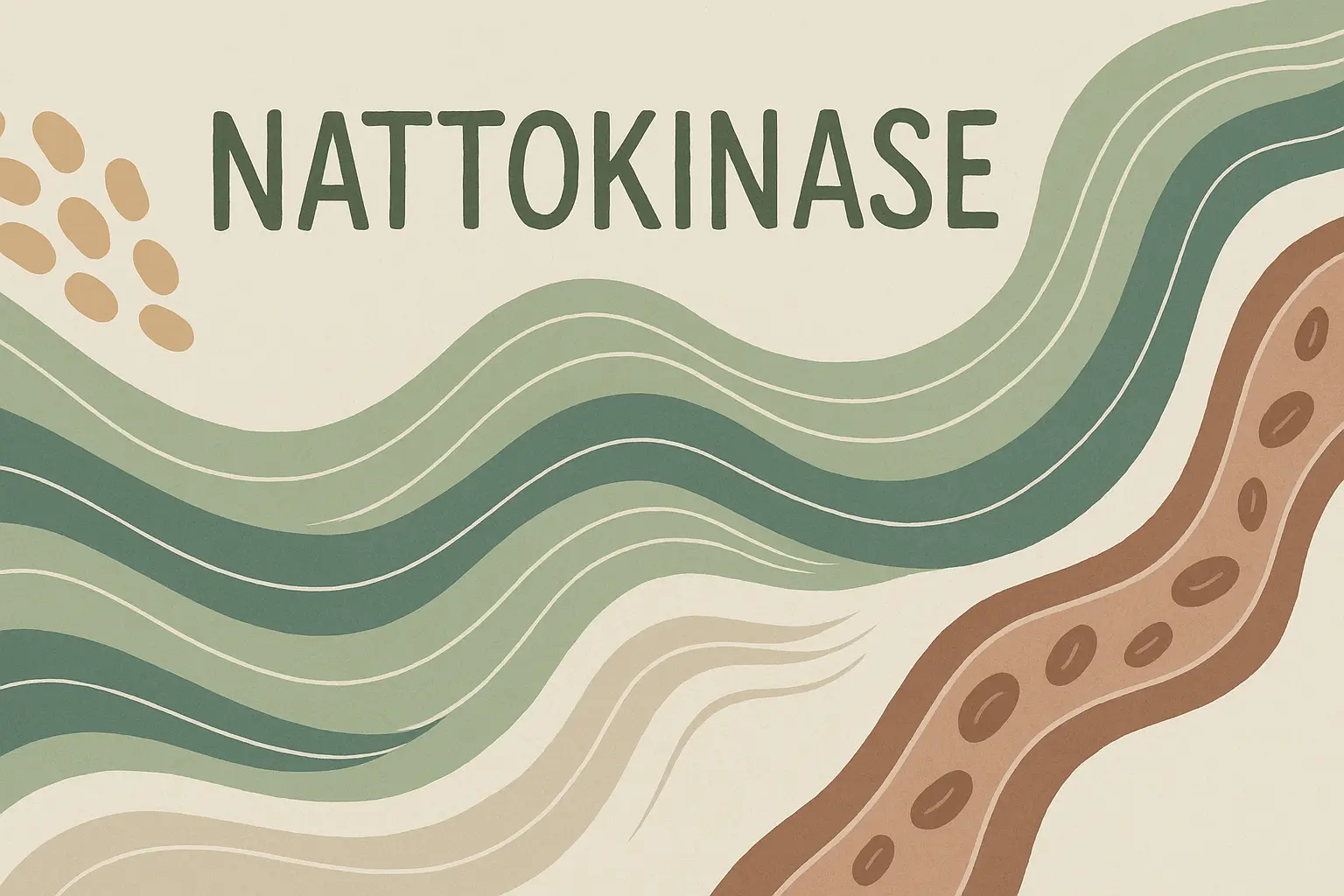Essentials of Nattokinase: What First-Time Users Need to Know
#Essentials of nattokinase
Nattokinase is a naturally occurring enzyme from fermented natto soybeans. Early studies show it helps keep blood flowing smoothly, supports cardiovascular health, and may aid healthy blood pressure—all with a solid safety record when used as directed.
1. What exactly is nattokinase?
Nattokinase is an enzyme (technically a serine protease) discovered in 1987 by Dr. Hiroyuki Sumi while studying the sticky strings of natto, a traditional Japanese breakfast food. Unlike many enzymes that break down in the stomach, nattokinase stays active after digestion, allowing it to circulate through the bloodstream and do its work.
Quick geek note: it’s not actually kinase (it doesn’t transfer phosphate groups) but the name stuck.
2. How nattokinase supports healthy circulation?
| Mechanism | Why it matters |
| Fibrinolytic activity – breaks down excess fibrin | Less fibrin → smoother blood flow |
| Platelet aggregation modulation | Helps maintain healthy clotting balance |
| Nitric-oxide signaling support | Promotes vessel relaxation for normal pressure |
| Anti-inflammatory & antioxidant signals | Protects delicate vessel linings (endothelium) |
Bottom line: consistent, low-dose supplementation may act like a gentle “maintenance crew” clearing traffic on the circulatory highway.
3. Benefits at-a-glance
💡 Pro tip: pair with vitamin K₂ (found in natto) or omega-3s for a synergistic boost.
*Clinical evidence is emerging; more large-scale human trials are underway.
4. Dosage & safety guide
| Goal | Typical daily dose | Form | Notes |
| General maintenance | 100 mg (2,000 FU) | Capsule/tablet | Take with water, on an empty stomach |
| Cardiovascular support | 200 mg (4,000 FU) | Capsule | Split into AM/PM for steadier enzyme levels |
| Sport recovery | 100 mg post-workout | Capsule/powder | Helps clear exercise-induced fibrin |
Who should avoid it?
✅ Generally recognised as safe (GRAS) in multiple jurisdictions; side-effects are rare and mild (e.g., stomach upset in < 2 % of users).
5. Getting started checklist
· Check FU, not mg – higher fibrinolytic units (FU) mean stronger activity.
· Stay consistent – enzymes work cumulatively; set a daily reminder.
· Look for third-party testing – ensures potency & purity.
· Mind the extras – avoid fillers, unnecessary binders, or GM soy if that’s a concern.
· Track your metrics – monitor blood pressure or get a basic lipid panel after 8–12 weeks.
6. FAQs
Q: Is nattokinase the same as Natto?
A: Natto is a whole food; nattokinase is the purified enzyme extracted from natto’s fermentation.
Q: How long before I notice benefits?
A: Many users report circulatory benefits within 4–8 weeks, but it varies with lifestyle and dose.
Q: Can vegetarians take it?
A: Yes—nattokinase is plant-derived (fermented soy) and typically encapsulated in veggie caps.
7. Key takeaways
· Natural enzyme with 30+ years of research behind it
· Supports healthy blood flow via fibrin breakdown & vessel relaxation
· Safe for most adults at 100–200 mg per day
·Always consult your healthcare provider when stacking with prescription blood thinners
Ready to experience smoother flow?
— Quality standardised from 20,000 to 60,000 FU per gram, third-party tested, functionally validated, and sourced from non-GMO fermented soybeans.


